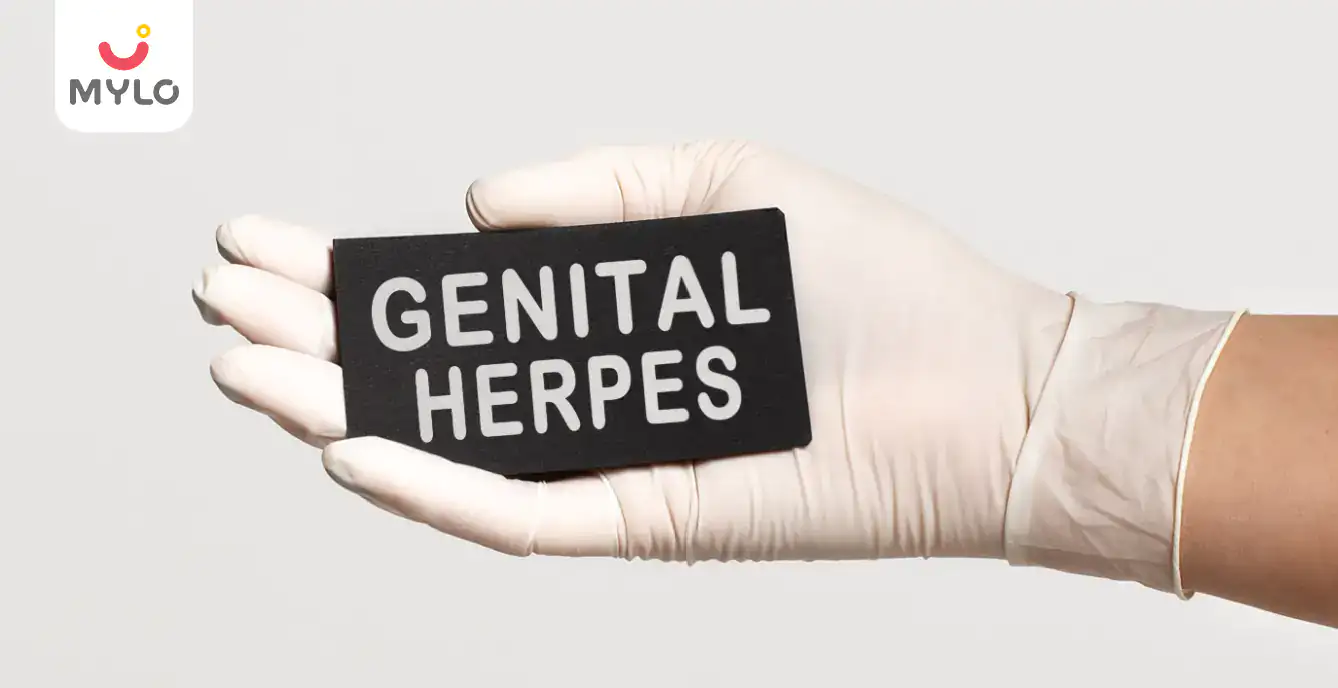Home

Hysteroscopy: Everything You Need to Know About This Minimally Invasive Procedure
In this Article

Getting Pregnant
Hysteroscopy: Everything You Need to Know About This Minimally Invasive Procedure
Updated on 8 June 2023



Medically Reviewed by
Dr. Shruti Tanwar
C-section & gynae problems - MBBS| MS (OBS & Gynae)
View Profile

Ladies, let's face it - no woman looks forward to getting a gynecological exam. But what if there was a minimally invasive procedure that could help diagnose and treat a variety of female reproductive issues? Enter hysteroscopy. This procedure may sound intimidating, but it's actually a relatively simple and safe way for doctors to take a closer look at the inside of your uterus.
In this article, we'll cover everything you need to know about hysteroscopy, including its uses, benefits, risks, and how it is performed.
What is Hysteroscopy Surgery?
Hysteroscopy means a surgical procedure that allows your doctor to examine the inside of your uterus using a hysteroscope. A hysteroscope is a thin, lighted, and flexible instrument that is inserted through your vagina and cervix into your uterus. It allows your doctor to see the inside of your uterus and identify any abnormalities or conditions that may be affecting your reproductive health.
Hysteroscopy can be used for diagnostic or therapeutic purposes. In a diagnostic hysteroscopy, your doctor will only examine the inside of your uterus to identify any abnormalities or conditions that may be affecting your reproductive health. In a therapeutic hysteroscopy, your doctor may use the hysteroscope to perform surgical procedures, such as removing fibroids or polyps, or treating uterine adhesions.
You may like: Endometrial Polyp and Pregnancy: How Uterine Polyps Can Affect Your Chances of Conception
When is a Hysteroscopy Recommended?
Now that we know what hysteroscopy means, let’s find out why a doctor may recommend it. There are several reasons why a doctor may recommend a hysteroscopy surgery.
Some of the most common hysteroscopy uses include:
1. Abnormal uterine bleeding
If a patient experiences heavy or irregular menstrual bleeding, a hysteroscopy can help diagnose the underlying cause.
2. Fibroids and polyps
Hysteroscopy can be used to detect and remove fibroids or polyps that can cause heavy bleeding, pain, or other symptoms.
3. Infertility
The procedure can help diagnose and treat conditions that may be preventing a woman from becoming pregnant.
4. Before an IVF
Hysteroscopy may also be recommended if you are planning to undergo in vitro fertilization (IVF) or other fertility treatments. It can help your doctor identify any conditions that may affect the success of these treatments, such as uterine fibroids or adhesions.
5. Repeated miscarriages
Hysteroscopy can identify structural abnormalities that may be causing repeated miscarriages, such as a septum or scar tissue.
6. Intrauterine device (IUD) placement
A hysteroscopy can help locate an IUD that has moved or become embedded in the uterus.
It is important to note that patients should consult with their healthcare provider to see if hysteroscopy surgery is an appropriate procedure for their specific medical condition.
You may like: Uterine Fibroids: Meaning, Causes & Prevention
How is Hysteroscopy Performed?
Hysteroscopy is typically performed in an outpatient setting, meaning you can go home the same day. Your doctor may recommend that you take a pain reliever before the procedure to help manage any discomfort you may experience.
During the procedure, you will lie on your back with your feet in stirrups, similar to a pelvic exam. Your doctor will insert the hysteroscope through your vagina and cervix into your uterus. They will then use a camera attached to the hysteroscope to examine the inside of your uterus.
If your doctor identifies any abnormalities or conditions during the procedure, they may perform a surgical procedure to remove them. This may include removing fibroids or polyps, or treating uterine adhesions.
Types of Hysteroscopy
There are two types of hysteroscopy: diagnostic and operative.
1. Diagnostic hysteroscopy:
Diagnostic hysteroscopy is used to examine the inside of the uterus and diagnose any abnormalities or conditions that may be affecting reproductive health.
2. Operative hysteroscopy
Operative hysteroscopy is used to treat any abnormalities or conditions identified during the diagnostic hysteroscopy. This may include removing fibroids or polyps, or treating uterine adhesions.
Benefits of Hysteroscopy
We know what hysteroscopy means and how it is performed, let us also find out what are the benefits of performing the procedure. Hysteroscopy is a procedure that can diagnose and treat several uterine conditions in women. Here are a few benefits of performing a hysteroscopy:
-
It allows for both diagnosis and treatment to be done in a single surgery.
-
It can diagnose and correct several uterine conditions, including polyps, fibroids, adhesions, and septums.
-
It can diagnose the cause of repeated miscarriages or fertility problems.
-
It can remove polyps or fibroid tumors, preventing bleeding by destroying tissue using electric current, freezing, heat, or chemicals.
-
It is a safe and non-invasive procedure that requires little recovery time and can be done on an outpatient basis, minimizing disruption to daily life.
-
Hysteroscopy also offers a faster recovery time than traditional surgery. Most women are able to return to their normal activities within a few days of the procedure.
However, it is important to note that the procedure carries certain risks with it.
Risks and Complications of Hysteroscopy
Like any medical procedure, hysteroscopy surgery carries some risks and complications. These may include bleeding, infection, or injury to the uterus or other organs. However, these risks are rare and are typically mild.
Your doctor will discuss the risks and complications of hysteroscopy with you before the procedure and will take steps to minimize these risks.
How Long Does It Take to Recover After Hysteroscopy?
Most women are able to return to their normal activities within a few days of the procedure. However, your recovery time may depend on the type of hysteroscopy you had and whether or not you had any surgical procedures performed during the procedure.
Your doctor will provide you with specific instructions on how to care for yourself after the procedure, including any restrictions on physical activity or sexual activity.
When to See a Doctor
If you experience any unusual symptoms after your hysteroscopy, such as heavy bleeding, severe pain, or fever, you should contact your doctor immediately. These symptoms may be a sign of a complication and should be evaluated by a medical professional.
Final Thoughts
Hysteroscopy is a minimally invasive procedure that allows your doctor to examine the inside of your uterus using a hysteroscope. If you are experiencing symptoms such as abnormal uterine bleeding, pelvic pain, or infertility, or if you have had multiple miscarriages, your doctor may recommend a hysteroscopy surgery to identify any conditions that may be affecting your reproductive health.
References
1. Abdollahi Fard S, Mostafa Gharabaghi P, Montazeri F, Mashrabi O. (2012). Hysteroscopy as a minimally invasive surgery, a good substitute for invasive gynecological procedures. Iran J Reprod Med.
2. Di Spiezio Sardo A, Calagna G, Santangelo F, Zizolfi B, Tanos V, Perino A, De Wilde RL. (2017). The Role of Hysteroscopy in the Diagnosis and Treatment of Adenomyosis. Biomed Res Int.





Medically Reviewed by
Dr. Shruti Tanwar
C-section & gynae problems - MBBS| MS (OBS & Gynae)
View Profile


Written by
Anupama Chadha
Anupama Chadha, born and raised in Delhi is a content writer who has written extensively for industries such as HR, Healthcare, Finance, Retail and Tech.
Read MoreGet baby's diet chart, and growth tips

Related Articles
Related Questions
Influenza and boostrix injection kisiko laga hai kya 8 month pregnancy me and q lagta hai ye plz reply me

Hai.... My last period was in feb 24. I tested in 40 th day morning 3:30 .. That is faint line .. I conculed mylo thz app also.... And I asked tha dr wait for 3 to 5 days ... Im also waiting ... Then I test today 4:15 test is sooooo faint ... And I feel in ma body no pregnancy symptoms. What can I do .

Baby kicks KB Marta hai Plz tell mi

PCOD kya hota hai

How to detect pcos

Related Topics
RECENTLY PUBLISHED ARTICLES
our most recent articles

Ayurveda & Homeopathy
Dalchini: How This Herb Can Make Way From Your Spice Rack to Your Medicine Cabinet

Health & Wellness
Fenugreek Powder: Health Benefits of Fenugreek From Your Kitchen to Your Medicine Cabinet

Lifestyle
Moringa Powder: The Superfood You Need in Your Diet for a Healthy Lifestyle

Illnesses & Infections
Genital Herpes: Causes, Symptoms, Risks & Treatment

Ayurveda & Homeopathy
Ashokarishta: All You Need to Know About This Miracle Tonic for Women

Leisure
10 Amazon Prime Movies to Look Forward to in 2023
- 10 Best Netflix Movies to Watch Out For in 2023
- Fertility Yoga: A Natural Solution to Boost Your Chances of Conception
- How to Get Regular Periods Naturally: Ayurvedic Herbs, Lifestyle Changes & Homeopathy
- Lodhra: The Wonder Herb for Women's Health
- Malabsorption Syndrome: Types, Causes, Symptoms, & Treatment
- Top 10 Short Bedtime Stories for Kids
- RH Incompatibility in Pregnancy - Causes, Symptoms & Treatments
- Patent Ductus Arteriosus (PDA) Symptoms & Treatment
- Why Babies Cry After Birth?
- IVF Process Step by Step Timeline: What to Expect During Your Fertility Journey
- Tracheoesophageal Fistula: Causes, Symptoms, Risks & Treatment
- Stillbirth: Cause, Symptoms, Risks & Prevention
- Giant Congenital Melanocytic Nevus: Causes, Symptoms, & Treatment
- Tokophobia: How to Manage Your Phobia of Pregnancy & Childbirth


AWARDS AND RECOGNITION

Mylo wins Forbes D2C Disruptor award

Mylo wins The Economic Times Promising Brands 2022
AS SEEN IN
















- Mylo Care: Effective and science-backed personal care and wellness solutions for a joyful you.
- Mylo Baby: Science-backed, gentle and effective personal care & hygiene range for your little one.
- Mylo Community: Trusted and empathetic community of 10mn+ parents and experts.
Product Categories
baby carrier | baby soap | baby wipes | stretch marks cream | baby cream | baby shampoo | baby massage oil | baby hair oil | stretch marks oil | baby body wash | baby powder | baby lotion | diaper rash cream | newborn diapers | teether | baby kajal | baby diapers | cloth diapers |








